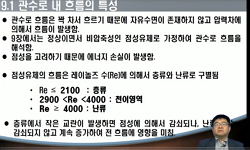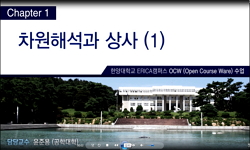본 논문에서는 전열(마이크로 히터, 센서)을 이용해 금형의 표면을 가열하는 E-MOLD 특허기술을 적용하여 휴대전화용 복합기능 도광판(Prismless LGP)을 제작하고, 전사성을 평가하였다. 이를 위...
http://chineseinput.net/에서 pinyin(병음)방식으로 중국어를 변환할 수 있습니다.
변환된 중국어를 복사하여 사용하시면 됩니다.
- 中文 을 입력하시려면 zhongwen을 입력하시고 space를누르시면됩니다.
- 北京 을 입력하시려면 beijing을 입력하시고 space를 누르시면 됩니다.
https://www.riss.kr/link?id=A103325655
- 저자
- 발행기관
- 학술지명
- 권호사항
-
발행연도
2009
-
작성언어
Korean
- 주제어
-
등재정보
KCI등재
-
자료형태
학술저널
-
수록면
186-193(8쪽)
-
KCI 피인용횟수
0
- DOI식별코드
- 제공처
-
0
상세조회 -
0
다운로드
부가정보
국문 초록 (Abstract)
본 논문에서는 전열(마이크로 히터, 센서)을 이용해 금형의 표면을 가열하는 E-MOLD 특허기술을 적용하여 휴대전화용 복합기능 도광판(Prismless LGP)을 제작하고, 전사성을 평가하였다. 이를 위하여 MEMS 공정을 이용하여 복합기능 도광판용 니켈 스탬퍼를 제작하였고, E-MOLD 기술의 핵심인 이동가열코어(movable heated core)가 설치된 금형을 설계, 제작하였다. 이를 이용하여 성형조건 중 금형온도를 변화시키면서 복합기능 도광판을 사출성형으로 제조 하였고, 금형온도가 성형품의 전사성에 미치는 영향에 대하여 알아보았다. 또한, 전산모사 프로그램(CAE)을 이용하여 금형온도와 사출시간에 따른 수지의 유동성을 해석하였다. 금형온도에 따른 도광판의 전사성은 l00℃(25.0㎚), 140℃(48.4㎚), 180℃(52.1㎚)로 나타났고, 스탬퍼(52.1㎚)와 비교했을 때 180℃에서 전사성이 가장 우수했다. 전산모사 해석결과에 따르면, 수지의 유동성은 금형온도(50~180℃)가 증가할수록 향상되었다. 사출시간(1~2sec)이 길수록 유동성이 감소하는 경향을 160℃에서 확인하였다. 따라서 수지의 전사성과 유동성은 금형온도에 따라 증가하고, 특히 유리전이 온도(140℃) 이상에서 크게 상승하였다.
다국어 초록 (Multilingual Abstract)
In this paper, we adopted E-MOLD patent technology in order to fabricate Prismless LGP(Light Guide Panel) for cellular phone and estimate the transcription of injection-molded parts. Then, we manufactured the Ni stamper for Prismless LGP using MEMS pr...
In this paper, we adopted E-MOLD patent technology in order to fabricate Prismless LGP(Light Guide Panel) for cellular phone and estimate the transcription of injection-molded parts. Then, we manufactured the Ni stamper for Prismless LGP using MEMS process. And the stamper was installed in the movable heated core which is the key part of a patented mold. Using this mold, we manufactured injection-molded plastic LGP parts with different mold temperatures so that we investigate effect of the temperature on the transcription of the parts. The CAE analysis was also conducted in order to compare with the experimental results. The transcription of LGP parts with various mold temperature displayed 100℃(25.0㎚), 140℃(48.4㎚), 180℃(52.1㎚) and when compared with stamper(52.1㎚), transcription was superior at 180℃. According to the CAE results, moldability was improved as mold temperature (50℃~180℃) increased, but when filling time(1~2sec) increases, it decreased at 160℃. And transcription and moldability were improved markedly at glass transition temperature(140℃).
참고문헌 (Reference)
1 S. Fellahi, "Weldlines in Injcection Molded Parts:A Review" 14 : 169-, 1995
2 J. A. Chang, "Rapid mold temperature control on micro injection molded parts with high aspect ratio micro-features" 2006
3 R. A. Malloy, "Plastic Part Design for Injection molding" Hanser Publisher 1994
4 M. C. Yu, "Micro-injection molding with the infrared assisted mold heating system" 2007
5 황철진, "LIGA-reflow 마이크로렌즈 패턴 금형 가공 및 LCD BLU 개발" 기계기술(신기술동향/기술리포트) 164-168, 2004
6 D. H. Kim, "Effects of the mold surface heating methods for the DVD stamper with nano pattern on the transcription of the injection molded parts using COC and PMMA plastics" 5 (5): 218-222, 2004
7 D. H. Kim, "Development of a notebook PC housing by using MmSH process" 2001
8 특허청, "2000년 신기술 동향 조사 보고서(백라이트부분의 저소비 전력화)" 2000
1 S. Fellahi, "Weldlines in Injcection Molded Parts:A Review" 14 : 169-, 1995
2 J. A. Chang, "Rapid mold temperature control on micro injection molded parts with high aspect ratio micro-features" 2006
3 R. A. Malloy, "Plastic Part Design for Injection molding" Hanser Publisher 1994
4 M. C. Yu, "Micro-injection molding with the infrared assisted mold heating system" 2007
5 황철진, "LIGA-reflow 마이크로렌즈 패턴 금형 가공 및 LCD BLU 개발" 기계기술(신기술동향/기술리포트) 164-168, 2004
6 D. H. Kim, "Effects of the mold surface heating methods for the DVD stamper with nano pattern on the transcription of the injection molded parts using COC and PMMA plastics" 5 (5): 218-222, 2004
7 D. H. Kim, "Development of a notebook PC housing by using MmSH process" 2001
8 특허청, "2000년 신기술 동향 조사 보고서(백라이트부분의 저소비 전력화)" 2000
동일학술지(권/호) 다른 논문
-
- 한국산학기술학회
- 이종선(Lee Jong-Sun)
- 2009
- KCI등재
-
Haematococcus pluvialis로부터 Haematococcus 추출물 제조 공정에서 효소 처리가 추출 효율과 항산화 활성에 미치는 영향
- 한국산학기술학회
- 인만진(In, Man-Jin)
- 2009
- KCI등재
-
- 한국산학기술학회
- 최석준(Choi, Seok-Joon)
- 2009
- KCI등재
-
병원고객관계관리 시스템 도입에 영향을 미치는 요인 연구
- 한국산학기술학회
- 전재란(Chun, Je-Ran)
- 2009
- KCI등재
분석정보
인용정보 인용지수 설명보기
학술지 이력
| 연월일 | 이력구분 | 이력상세 | 등재구분 |
|---|---|---|---|
| 2026 | 평가예정 | 재인증평가 신청대상 (재인증) | |
| 2020-01-01 | 평가 | 등재학술지 유지 (재인증) |  |
| 2017-07-01 | 평가 | 등재후보로 하락(현장점검) (기타) |  |
| 2017-07-01 | 평가 | 등재학술지 선정 (계속평가) |  |
| 2015-01-01 | 평가 | 등재학술지 유지 (등재유지) |  |
| 2011-01-01 | 평가 | 등재학술지 유지 (등재유지) |  |
| 2008-01-01 | 평가 | 등재학술지 선정 (등재후보2차) |  |
| 2007-08-28 | 학술지등록 | 한글명 : 한국산학기술학회논문지외국어명 : Journal of Korea Academia-Industrial cooperation Society |  |
| 2007-07-06 | 학회명변경 | 영문명 : The Korean Academic Inderstrial Society -> The Korea Academia-Industrial cooperation Society |  |
| 2007-01-01 | 평가 | 등재후보 1차 PASS (등재후보1차) |  |
| 2005-01-01 | 평가 | 등재후보학술지 선정 (신규평가) |  |
학술지 인용정보
| 기준연도 | WOS-KCI 통합IF(2년) | KCIF(2년) | KCIF(3년) |
|---|---|---|---|
| 2016 | 0.68 | 0.68 | 0.68 |
| KCIF(4년) | KCIF(5년) | 중심성지수(3년) | 즉시성지수 |
| 0.66 | 0.61 | 0.842 | 0.23 |




 ScienceON
ScienceON DBpia
DBpia






